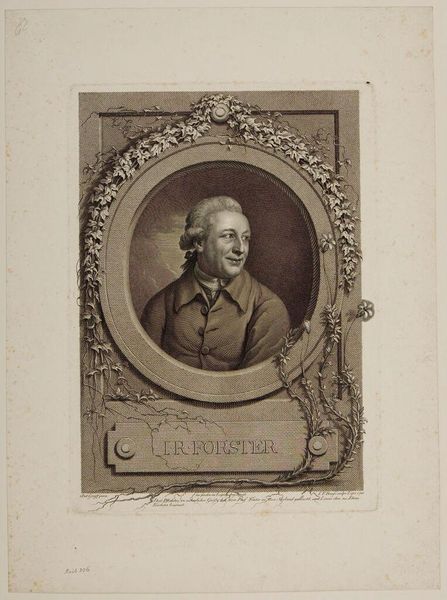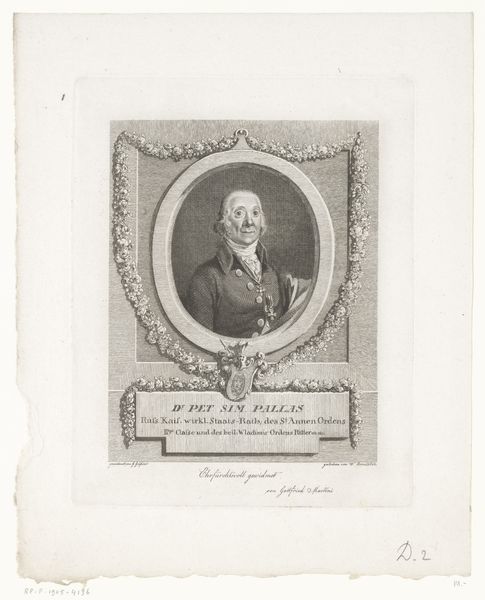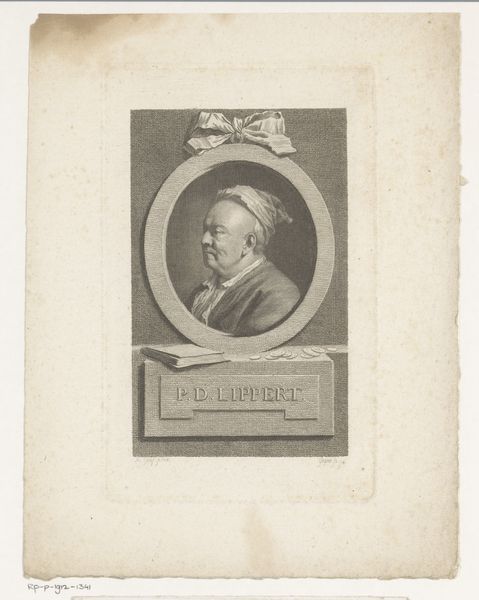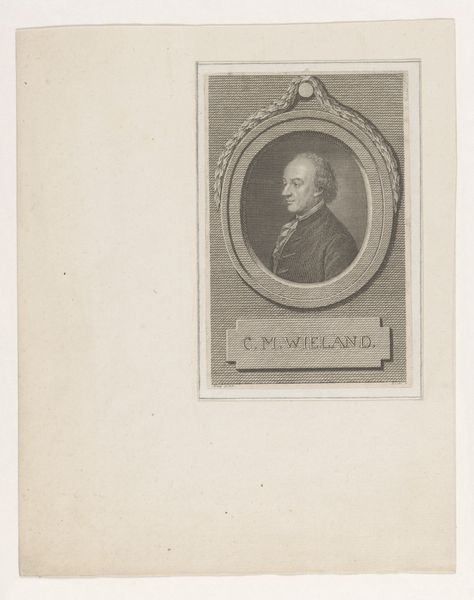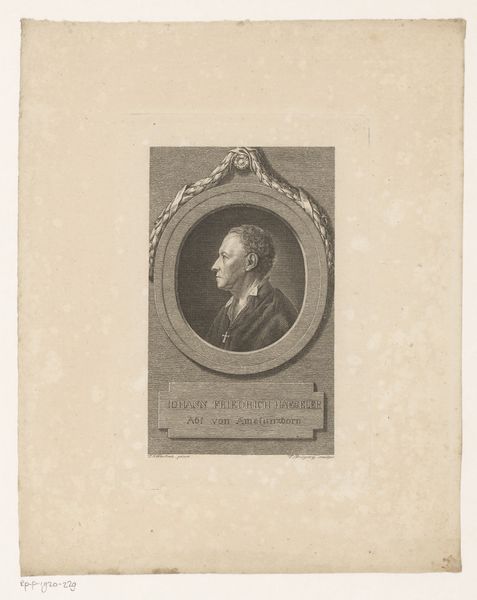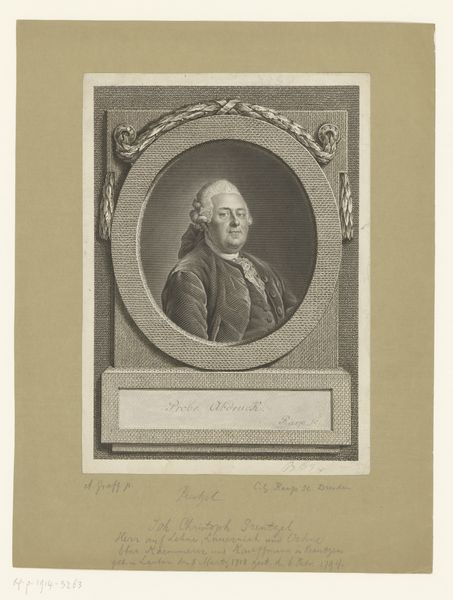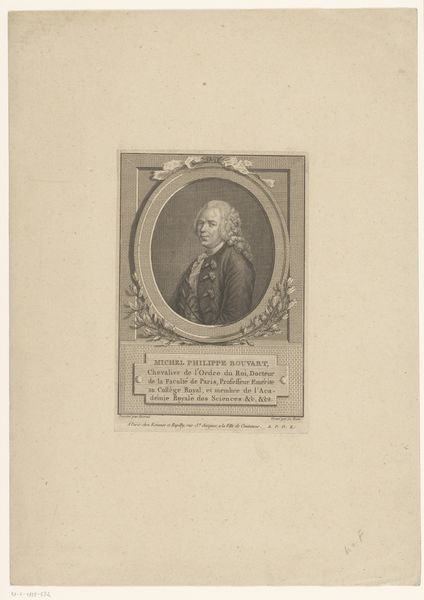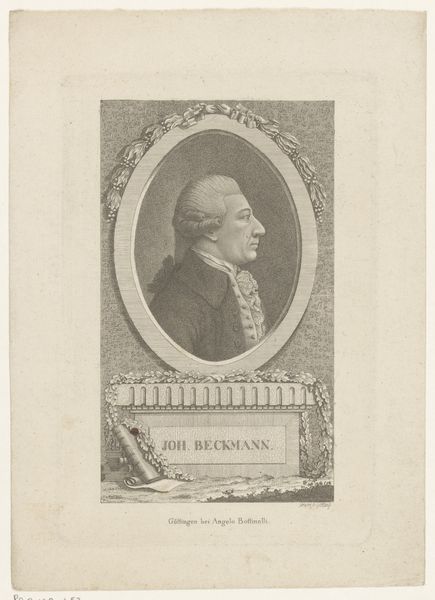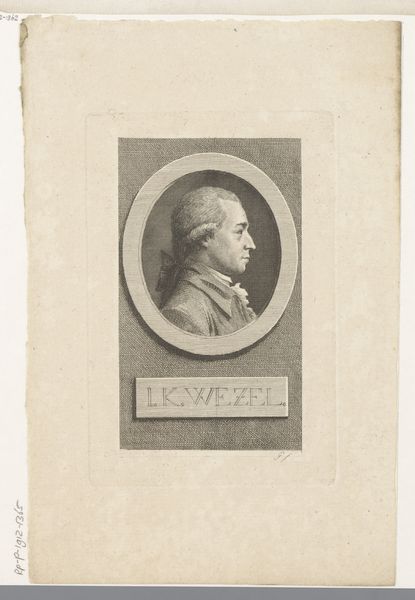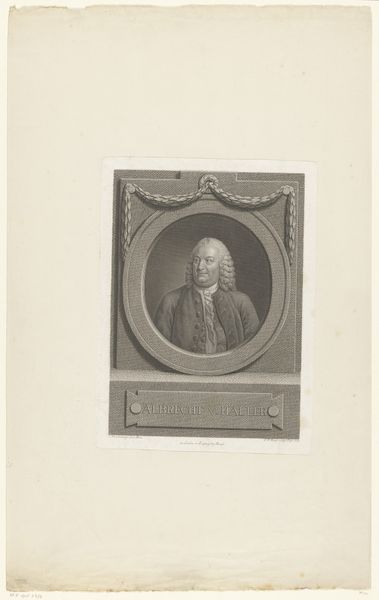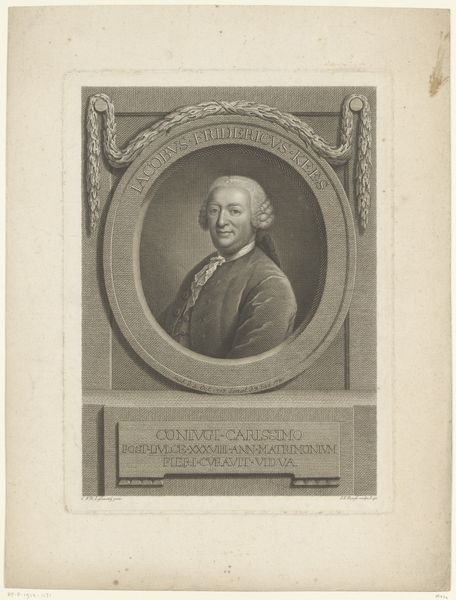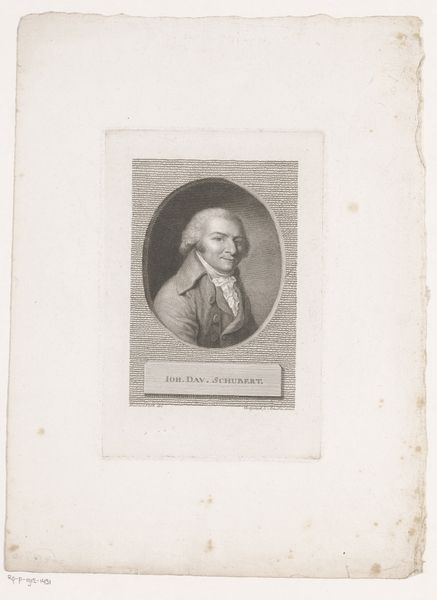
paper, engraving
#
portrait
#
neoclacissism
#
old engraving style
#
paper
#
history-painting
#
engraving
Dimensions: height 278 mm, width 196 mm
Copyright: Rijks Museum: Open Domain
Editor: This is Johann Friedrich Bause’s 1787 engraving of Georg Forster. It's fascinating how detailed and refined the lines are. What symbols and cultural references stand out to you in this piece? Curator: The circular frame adorned with ivy immediately catches my eye. The circular format inherently symbolizes completeness, eternity, and the cyclical nature of time. Considering the historical context of the Enlightenment, which fostered exploration and scientific inquiry, ivy, a symbol of attachment, memory, and immortality, implies Forster's lasting contribution to knowledge. What emotional effect do you think that has on the viewer? Editor: That's a good question. I guess the artist and patron wanted to portray Forster as intellectual and everlasting? Curator: Precisely. Think about the gaze too. Forster isn't looking directly at us, but rather off to the side, almost as if contemplating something. That communicates intellectual depth and invites us, as viewers, to ponder what occupies his thoughts. And the lettering is in Latin. Why do you think that is? Editor: Perhaps Latin suggested the historical grandeur of the Roman Republic, or just universalism, given the Enlightenment ideals? Curator: Exactly! Neoclassicism very intentionally looked back. These choices create a sense of continuity with the past and anchor him within the intellectual tradition of Europe. Editor: This makes me rethink how portraiture can actively shape historical memory through strategic symbols. Thanks so much for sharing. Curator: My pleasure. Every symbol whispers a cultural story!
Comments
No comments
Be the first to comment and join the conversation on the ultimate creative platform.
